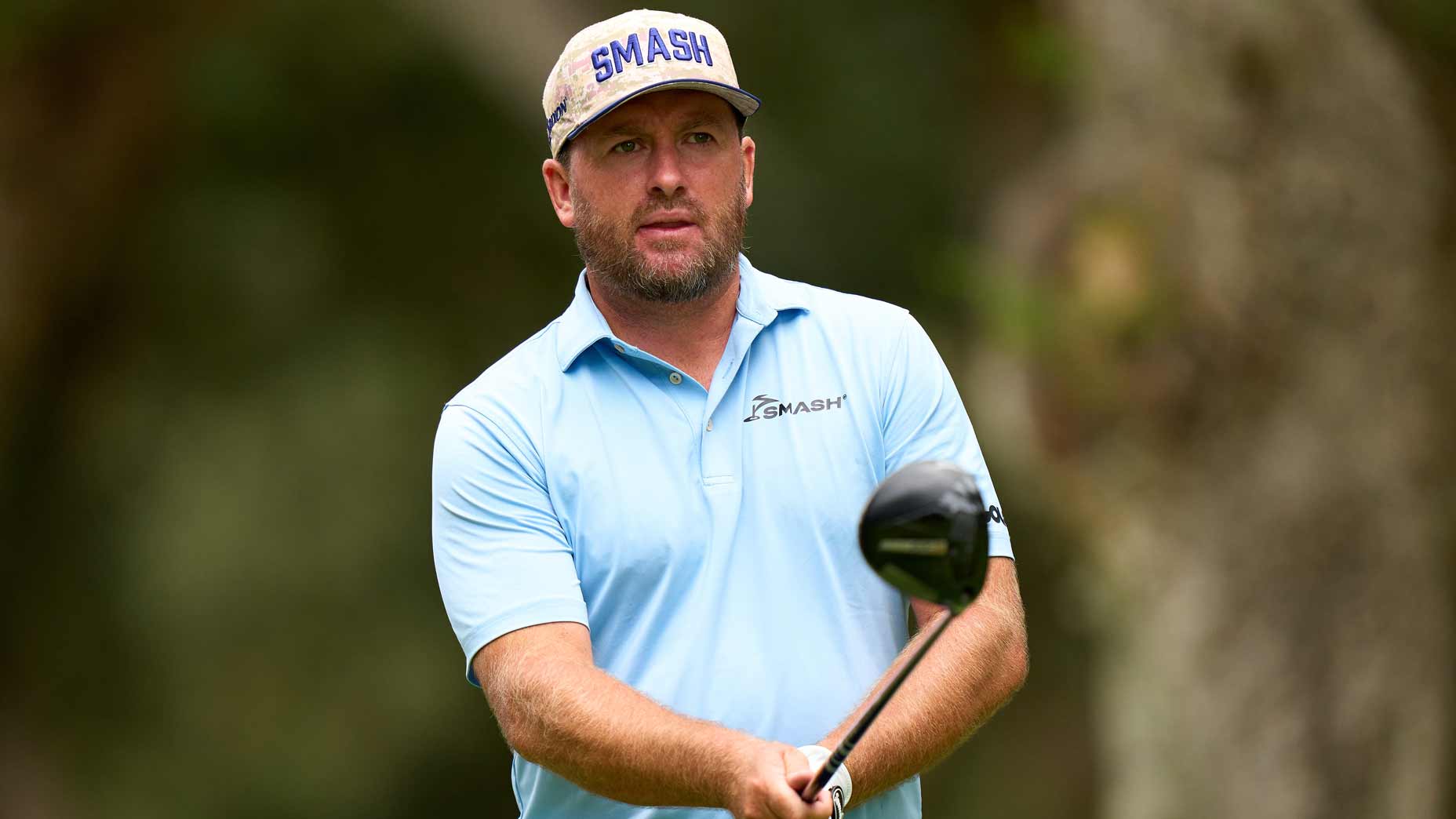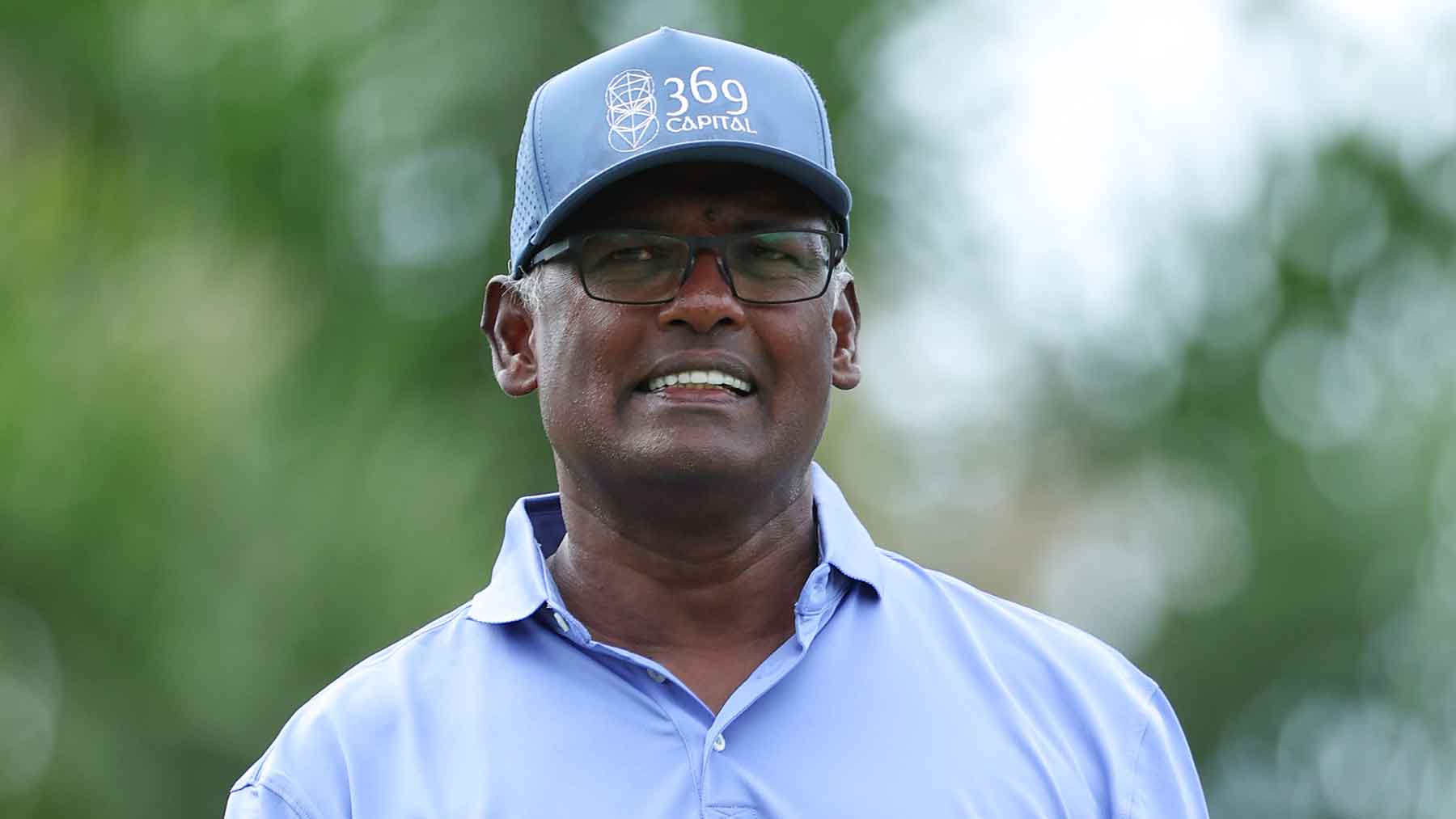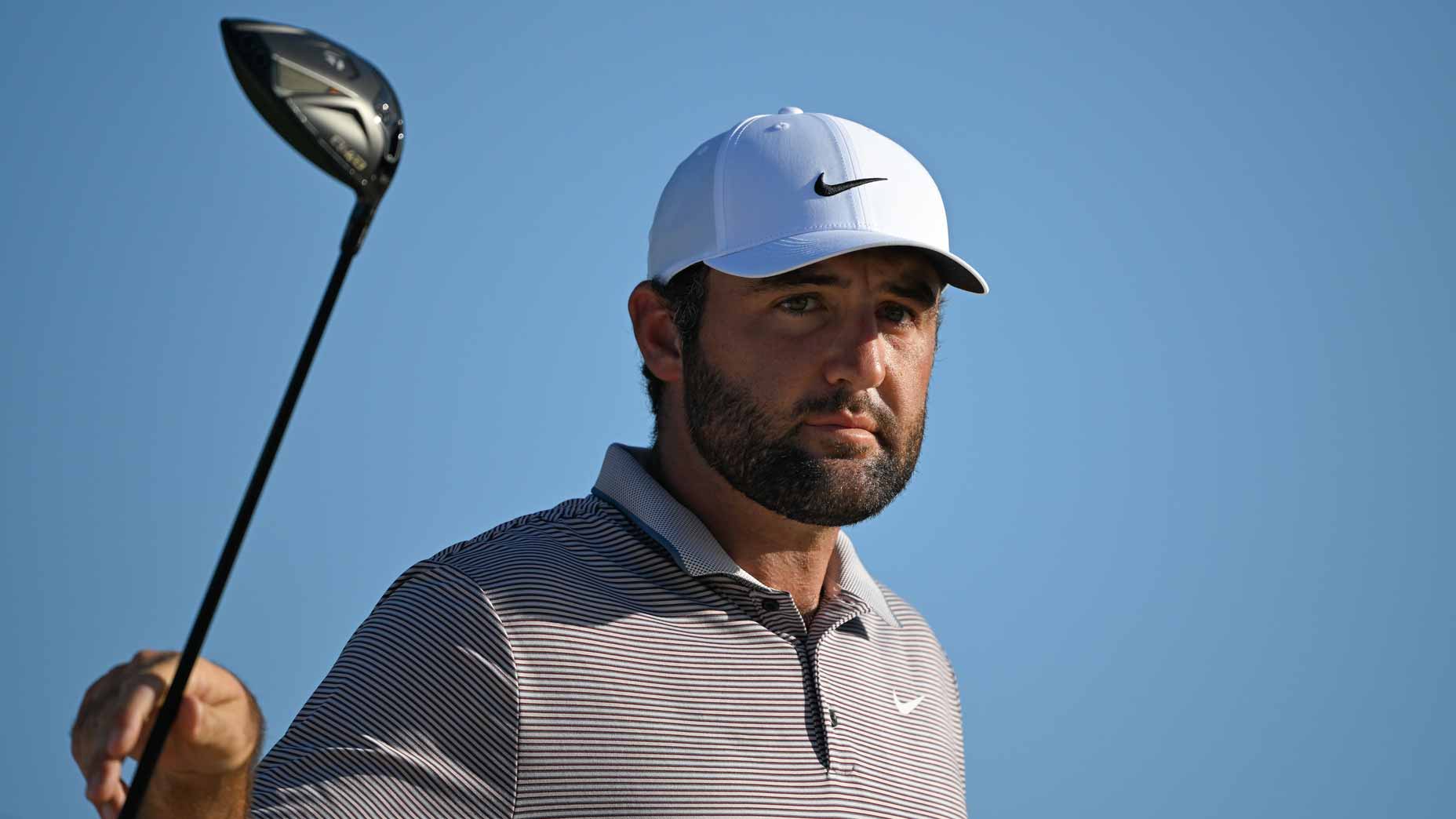LOUISVILLE MUHAMMAD ALI INTERNATIONAL AIRPORT, Ky. — Few places on earth offer better opportunity for people watching than the airport. And for traveling golf junkies, few places rival the people spotting on offer in the airport the morning after a major championship. Especially in a mid-size city like Louisville.
There goes Thorbjorn Olesen, checking a luggage cart full of bags for his Allegiant Air flight. Ah! That’s Andrew Putnam with wife and kids working their way through TSA pre-check security. CBS broadcaster Colt Knost is waiting to check a bag of his own. Justin Thomas’s agent is carrying a golf club in hand, trying to find the best way to get it back to Florida.
To get to your gate at SDF, you had to pass a tiny, fenced-in putting green where travelers could practice their 8-footers. Above it was an advert for Elijah Craig whiskey, a Kentucky favorite and official drink partner of the PGA Championship.
As it turns out, walking through the airport is not just about people spotting — it’s as good of a reminder as any of the various stakeholders in the pro game. The media, the sponsors, the fans, the players, the charities, the television product. A six-sided, 3-D shape, where each impacts the others. You know, like a Rubik’s Cube.
As I approached Gate A15 for a flight home to Chicago, I came upon another major stakeholder in the game. They can remain nameless for the sake of this exercise, but just know they represent one of the important pillars of it all. Naturally, we fell into a debrief of the week — an exhale on everything that happened at Valhalla, how the golf world reacted to it all and why it mattered. It might as well have been a podcast, answering each question with another question.
Why would a board member resign on Monday of the PGA? Why would another board member resign on Sunday of the PGA? How does that make Jordan Spieth’s “false narrative” comments look? If you lorded over it all, what schedule would you create? Could the Tour start its season in Australia? Would fans rather watch January golf before NFL playoff games or after? TV networks would obviously want the latter of the two. But could you find a sponsor interested in funding $20 million purses for Middle East swing to start the season? There’s a lot of money coming from that part of the world. But, uh, does Spieth want to start his season in Dubai? McIlroy sure does.
This jumbling of intersecting interests feels more and more like a Rubik’s Cube these days, particularly given the hemorrhage of the Tour’s policy board, the entity that makes final decisions on how to move the leading tour in the game forward. They’re in charge of solving this mess, but solving for one side of it impacts another. When the policy board limits the field size of Signature Events — bent on getting the best players to show up for sponsors — it upsets other sections of the Tour membership. When the membership is unhappy, they look elsewhere — like LIV Golf — or they air out those grievances to the world (media and fans). The more grievances aired, the more fans are given a reason to look elsewhere for their entertainment, and the more sponsors are uninterested in aligning with the product. There are silver bullets like McIlroy’s win alongside Shane Lowry at the Zurich Classic, which invigorated the sponsorship, enlivened the action, raised annual TV ratings and gave fans a new narrative to watch for: a global star could be trending into form ahead of the PGA Championship.
As for our conversation by Gate A15, we didn’t come up any obvious solutions. (Good thing we’re not in Tour governance!) But the if-this-then-that back and forth called to mind comments McIlroy made during the Players Championship in March. He wants to solve golf’s Rubik’s Cube, and is likely in favor of a different approach than most of his fellow professionals.
“To me, this is the problem with a members’ organization,” McIlroy said. “Things are created for the members. Then once those things are created, you’ve got to go sell those things to fans, sponsors, media. To me, that seems a little backwards.
“I think what needs to happen is you need to create things for the fans, for the sponsors, for the media, and then you have to go sell that to the players, tell them to get on board with that, because if they get on board and we’re all part of the business now, if the business does better, we do better. That seems pretty simple to me.”
If that doesn’t sound like figuring out the yellow, white and and orange sides and getting the green side to accept it will be jumbled up with some red and blue. (Now, please don’t go sending in emails explaining how to solve Rubik’s Cubes. I know how it’s done, and pro golf clearly can’t be solved simply by watching a YouTube tutorial.) It left us with one final set of important questions to think about as we boarded our separate flights:
Which side is going to be comfortable with their squares not all matching up? Could all sides agree to accept 60 percent of what they desire? Is there a compromise-worthy middle ground for Tiger Woods and Rory McIlroy and RBC and ESPN+ and you and me? My optimism is dented at the moment. Let’s just leave it at that.
Since this is a (mostly) weekly column called Tuesday Takes, as in multiple takes, we’ve got two more to share. Enjoy!
1. This is the greatest letter-writing era in pro sports history
It all started with “Surely, you jest” from Greg Norman to Jay Monahan. It continued many, many times from Monahan to the Tour membership. And then from a subset of the Tour membership back to Monahan, demanding Tiger Woods be added to the Policy Board. Now, we have two notes in the same week, informing that policy board that independent directors are resigning. Notice a trend?
This is, without a doubt, the greatest letter-writing era in golf history, and it might be the best letter-writing era in pro sports history. Everything that matters these days is done in letter form. It’s a symptom of the civil war in pro golf and also a symptom of the structures of the game. How do you communicate with the representation of 200+ independent contractors, all at once? You do so in letter form. Leaving as little room for interpretation as possible. Is this the best way of doing it? I’ll be writing about it a bit more in-depth in the near future. Until then, we wait. Surely somewhere, someone is writing another one…
2. Call your loved ones swing coaches
A hidden aspect of that PGA Championship leaderboard was the people behind the players. Particularly, the coaches. Viktor Hovland, who has struggled to show his best form in 2024, recently went back to working with Joe Mayo, and look what happens? Solo third. Collin Morikawa, who spent years and years working with Rick Sessinghaus, took a break from that partnership, but recently went back to it in March, “just to reach out as a friend, to be honest,” he said. “Not even for the golf swing, just more to talk. Sometimes you need that. Sometimes you need someone to just talk it through and get back to playing golf.” Now, they talk every day. And the results have had him in contention at the Masters and the PGA.
Xander Schauffele, who has mostly known just one coach throughout his career, his father Stefan, decided to add Chris Como to the fold late in 2023. While everyone on Team Schauffele asserts that Como is a playing a role of swing “consultant,” it certainly feels like more than that when it’s Como on hand as Xander breaks through in Louisville. Como has been keen to not try and alter too much about Schauffele’s game but more so accentuate the best parts of what already made him a top-level performer. I’d say they’ve succeeded.
Have a solve for golf’s Rubik’s Cube? Send all comments, concerns and notes to sean.zak@golf.com.










